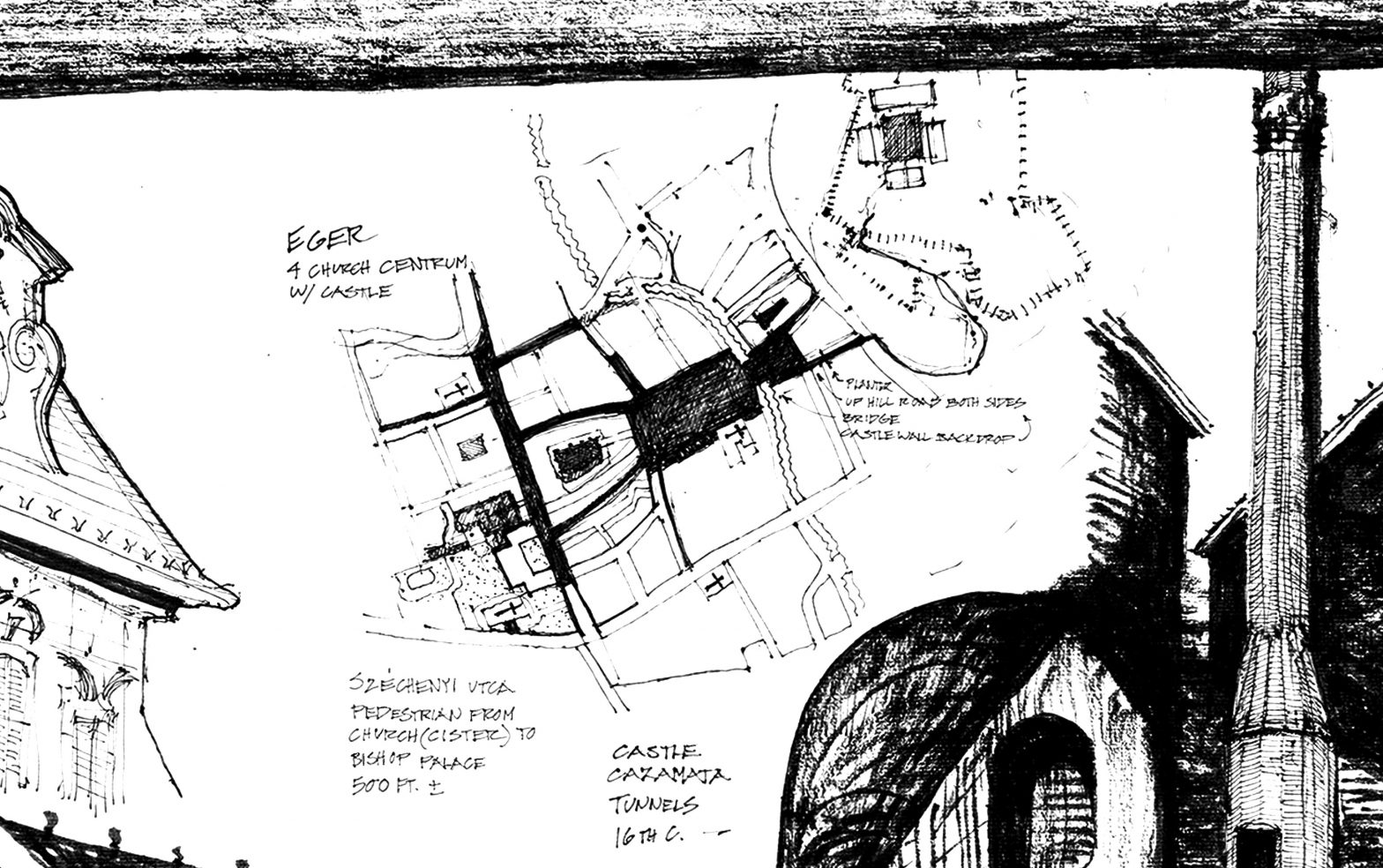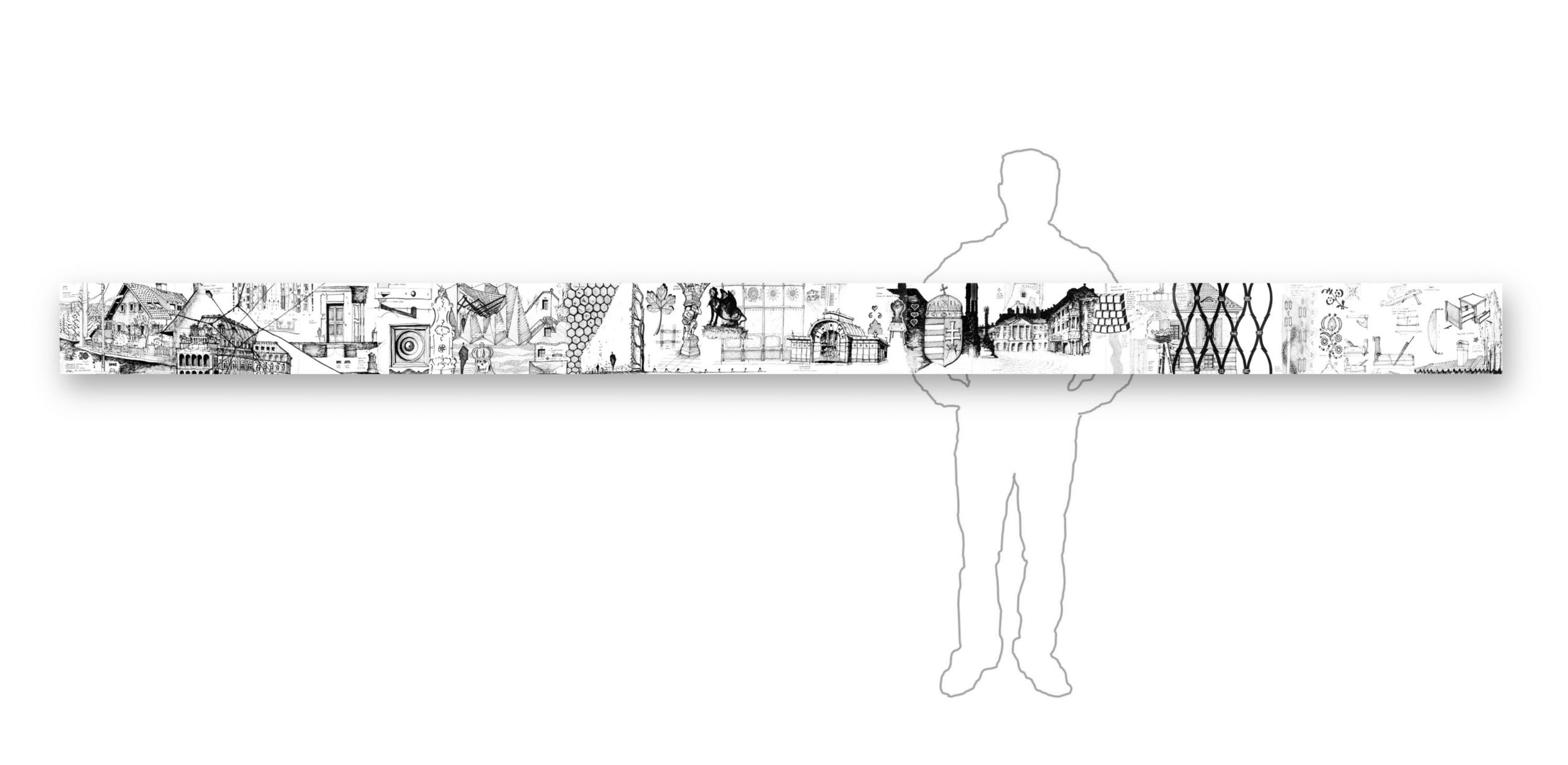6.42.Hungary-4-detail-m Highlights Relevant to Sustainable Design:
We can rethink auto-centric suburban sprawl in favor of pedestrian town centers.
This is a diagram of a small-town plan, which is blackened where automobiles are not permitted at certain times of the day. The priority of the pedestrian in cities and towns such as this one is very clear. Like most European cities that evolved prior to the invention of the automobile, the Hungarian ones are no different. The ironic thing is that a city square, which is a great European gathering place for retail commerce and social interaction, has largely been replaced in America by the shopping mall. Perhaps the reason we design malls with double-sided indoor streets, benches, and even trees, is to replicate the pedestrian experience in cities with centers void of cars. The shopping mall is often the last great pedestrian experience for residents of American suburbs.
One difference is that the suburban mall is typically an island surrounded by a parking lot in what probably used to be a cornfield. A European or even an American town square is not surrounded by parking lots but by people and buildings. As Internet technology opens the door even further to working outside of cities, we can revisit the idea of suburban town centers versus the strip malls and sprawl.
Author and illustrator: Charlie Szoradi is an architect, inventor, and the CEO of Independence LED Lighting. He writes about many other topics related to city planning and suburban town centers through his extensive travels around the world.
If you have found this posting online, it is an excerpt from Mr. Szoradi’s book Learn from Looking that served as the inspiring seed content for this drawing share resource. For additional drawings and insights on suburban town centers, we hope that you enjoy exploring LearnfromLooking.com. You can search via general terms such as sustainability as well as narrower terms such as suburban sprawl, shopping malls, and suburban town centers.



